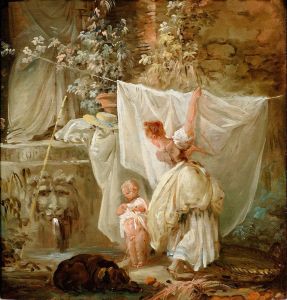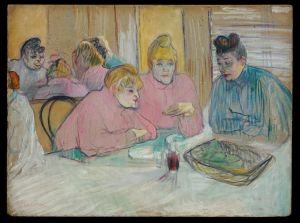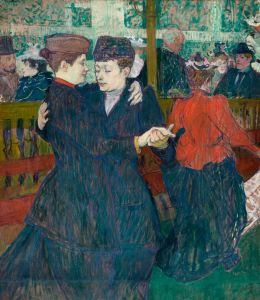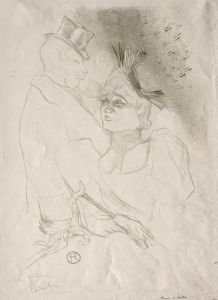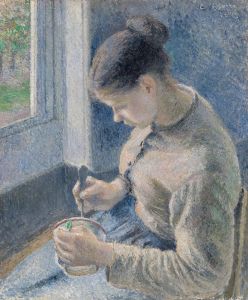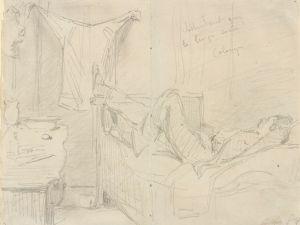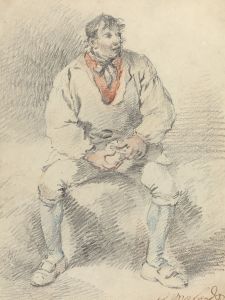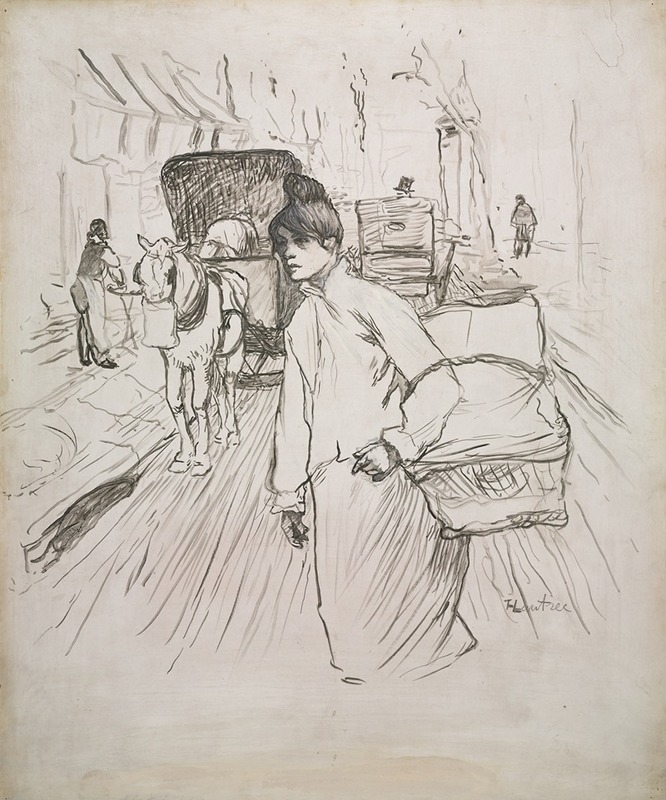
The Laundress
A hand-painted replica of Henri de Toulouse-Lautrec’s masterpiece The Laundress, meticulously crafted by professional artists to capture the true essence of the original. Each piece is created with museum-quality canvas and rare mineral pigments, carefully painted by experienced artists with delicate brushstrokes and rich, layered colors to perfectly recreate the texture of the original artwork. Unlike machine-printed reproductions, this hand-painted version brings the painting to life, infused with the artist’s emotions and skill in every stroke. Whether for personal collection or home decoration, it instantly elevates the artistic atmosphere of any space.
Henri de Toulouse-Lautrec, a prominent French painter and illustrator, is renowned for his depictions of Parisian nightlife in the late 19th century. Among his diverse body of work, "The Laundress" (French: "La Blanchisseuse") stands out as a significant piece that captures the essence of everyday life during this period. Painted in 1886-1887, this artwork reflects Toulouse-Lautrec's keen interest in portraying the working class and their environments, a theme that recurs throughout his oeuvre.
"The Laundress" depicts a young woman engaged in the laborious task of laundry, a common occupation for women in Paris at the time. The painting is notable for its candid representation of the laundress, who is shown absorbed in her work, emphasizing the dignity and resilience of the working class. Toulouse-Lautrec's use of color and brushwork in this piece is characteristic of his style, which often combines elements of Impressionism with a more personal, expressive approach.
In this painting, Toulouse-Lautrec employs a muted color palette, dominated by earthy tones and soft hues, which adds a sense of realism and intimacy to the scene. The composition is carefully constructed, with the laundress positioned slightly off-center, drawing the viewer's attention to her focused expression and the physicality of her task. The background is rendered with loose brushstrokes, suggesting the bustling environment of a laundry room without detracting from the central figure.
Toulouse-Lautrec's interest in depicting laundresses and other working-class subjects can be traced back to his fascination with the vibrant and often gritty life of Paris. His works frequently explore themes of labor, leisure, and the social dynamics of the city, offering a nuanced perspective on the lives of its inhabitants. "The Laundress" is a testament to his ability to capture the humanity and individuality of his subjects, elevating everyday scenes to the level of fine art.
The painting also reflects Toulouse-Lautrec's broader artistic influences and his connections with other artists of the time. While he was associated with the Post-Impressionist movement, his work also shows the impact of Japanese prints, which were popular in Europe during the late 19th century. This influence is evident in his use of bold outlines and flattened perspectives, techniques that can be seen in "The Laundress."
Henri de Toulouse-Lautrec's "The Laundress" remains an important work within his portfolio, exemplifying his skill in capturing the essence of his subjects with empathy and precision. The painting not only provides insight into the artist's unique style but also serves as a historical document, offering a glimpse into the lives of working-class women in 19th-century Paris. Through this piece, Toulouse-Lautrec continues to be celebrated for his ability to portray the beauty and complexity of everyday life.





